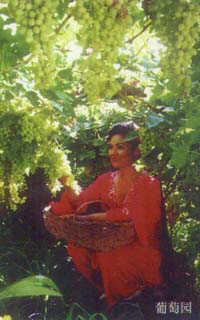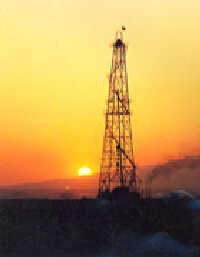|
Hami Region
( 2005-09-13 )
 Hami region is located in the east of Northwest China's Xinjiang Uygur Autonomous Region. It covers an area of 153,000 square kilometers, the third largest of regions and prefectures in Xinjiang, behind the Bayangol Mongolian Autonomous Prefecture and the Hotan Region. Under its administration are two counties and one city. Hami region is located in the east of Northwest China's Xinjiang Uygur Autonomous Region. It covers an area of 153,000 square kilometers, the third largest of regions and prefectures in Xinjiang, behind the Bayangol Mongolian Autonomous Prefecture and the Hotan Region. Under its administration are two counties and one city.
The region contains 28 ethnic groups such as Uygur, Han, Hui and Kazak, with a total population of 510,000. Hami City, seat of the administrative agency, is 595 kilometers away from Urumqi based on highway distance and 574 kilometers away based on railway distance. Hami City is the center of politics, economics, culture, and transportation in this region.
The region has a typical continental climate with a total pastureland of 62.9 million mu (943 million hectares) and available water resources of 16.95 hundred million cubic meters.
Rare wild animals are wild camels, red deer, snow leopards and Mongolian gazelles, while wild medicinal plants are licorice, Ephedra sinica, Condonopsis pilosula, Bupleurum, and Saussurea involucrate.
 The proven mineral resources totals 76 kinds. The proven deposit of iron ore is 2.78 hundred million tons, while the deposit of yellow humic acid is 3.7 hundred million tons, ranking first in the world. The resources of petroleum and natural gas have been proven with a bright prospect. The proven mineral resources totals 76 kinds. The proven deposit of iron ore is 2.78 hundred million tons, while the deposit of yellow humic acid is 3.7 hundred million tons, ranking first in the world. The resources of petroleum and natural gas have been proven with a bright prospect.
Hami, also known as Kunwu in ancient times, was an important strategic place on the ancient Silk Road. Today Hami is the eastern gate of Xinjiang and a convenient transport stop. The Lanzhou-Xinjiang Railway and the 312 Highway run through it and buses also stop at all the counties.
The favorite climate conditions make Hami home to sweet melons such as Hami melon, watermelon, grape, and red jujube, which are all exported in large quantities.
There are such tourist attractions as the Bailkun Lake, White Rock, Mingsha Mountain, and the ruins of Baiyanggou, and so on.
|

